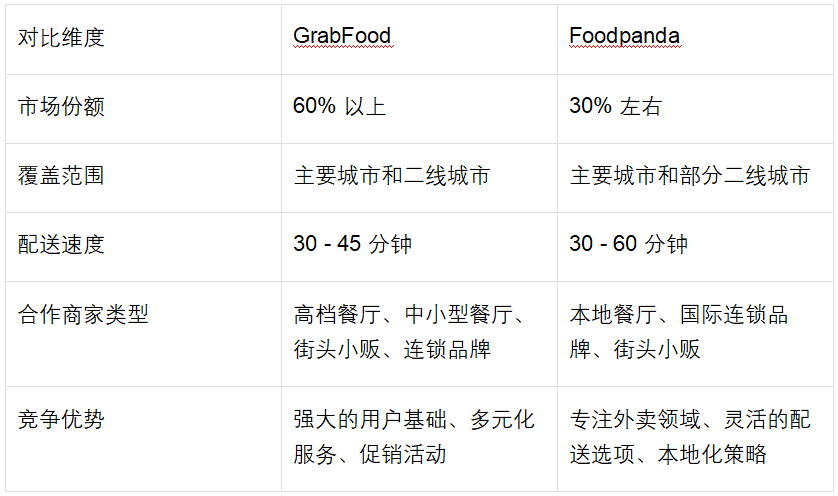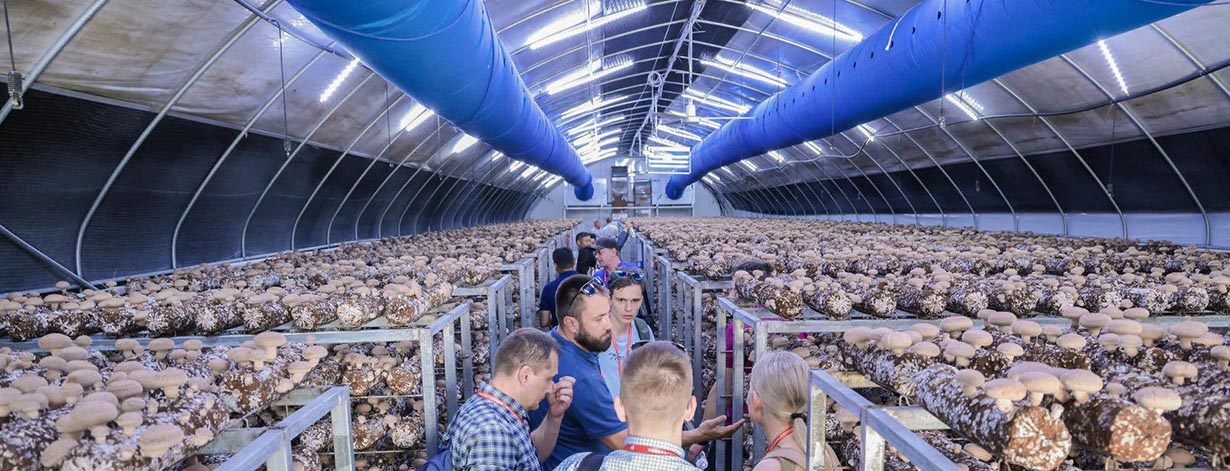
The following is a detailed introduction to GrabFood and Foodpanda, the two major food delivery platforms in Malaysia, covering their backgrounds, market shares, operation models, and competitive advantages. This information is of great significance for food ingredient suppliers and traders to understand the food delivery market in Malaysia.
1. GrabFood1.1 Background and Market Share
Establishment Time: GrabFood, a food delivery service platform under the Southeast Asian technology giant Grab, was launched in 2016 and officially entered the Malaysian market in 2018.
Market Share: GrabFood is one of the largest food delivery platforms in Malaysia, accounting for more than 60% of the food delivery market share.
Coverage: GrabFood has extensive coverage in major cities in Malaysia, such as Kuala Lumpur, Penang, and Johor Bahru. Its service scope includes restaurants, street vendors, and chain catering brands.
1.2 Operation ModelPlatform Model: GrabFood adopts a typical platform model, connecting consumers with food and beverage merchants. Consumers place orders through the Grab app, and the platform is responsible for delivery.
Delivery Service: GrabFood has a large network of riders and offers fast delivery speed, usually completing orders within 30 - 45 minutes.
Co - operating Merchants: GrabFood collaborates with various food and beverage enterprises, including high - end restaurants, small and medium - sized restaurants, street vendors, and chain brands (such as McDonald's and KFC).
1.3 Competitive AdvantagesStrong User Base: Grab is one of the largest super - apps in Southeast Asia, with a huge user group. GrabFood can leverage Grab's traffic advantage to rapidly expand the market.
Diversified Services: In addition to food delivery services, Grab also provides services such as ride - hailing, payment, and express delivery. Users can meet multiple needs within one app, enhancing user stickiness.
Promotional Activities: GrabFood often launches discounts, coupons, and exclusive member activities to attract consumers to place orders.
1.4 Significance for Suppliers and TradersExpanding Sales Channels: By collaborating with GrabFood, food and beverage enterprises can reach more consumers, especially young people and office workers.
Data Analysis Support: GrabFood provides detailed sales data and consumer behavior analysis, helping food and beverage enterprises optimize their menus and marketing strategies.
2. Foodpanda2.1 Background and Market Share
Establishment Time: Foodpanda was founded in 2012 and is a food delivery platform under the German Delivery Hero Group. It entered the Malaysian market in 2012.
Market Share: Foodpanda is the second - largest food delivery platform in Malaysia, accounting for about 30% of the market share.
Coverage: Foodpanda covers major cities and some second - tier cities in Malaysia, with a wide service scope.
2.2 Operation ModelPlatform Model: Foodpanda also adopts a platform model, connecting consumers with food and beverage merchants. Consumers place orders through the Foodpanda app or website, and the platform is responsible for delivery.
Delivery Service: Foodpanda has its own rider team and offers relatively fast delivery speed, usually completing orders within 30 - 60 minutes.
Co - operating Merchants: Foodpanda collaborates with various food and beverage enterprises, including local restaurants, international chain brands, and street vendors.
2.3 Competitive AdvantagesFocus on the Food Delivery Field: Foodpanda focuses on food delivery services and has accumulated rich industry experience and technical advantages.
Flexible Delivery Options: Foodpanda provides a variety of delivery options, including instant delivery and pre - ordered delivery, to meet the needs of different consumers.
Localization Strategy: Foodpanda has launched localized marketing activities and services in Malaysia, such as collaborating with local restaurants to launch special menus to attract local consumers.
2.4 Significance for Suppliers and TradersIncreasing Exposure: By collaborating with Foodpanda, food and beverage enterprises can increase brand exposure, especially among young consumers.
Flexible Delivery Services: Foodpanda's various delivery options can help food and beverage enterprises better meet consumer needs and improve customer satisfaction.
3. Comparison between GrabFood and Foodpanda
4. Future Trends of the Malaysian Food Delivery Market4.1 The Integration of Healthy Eating and Food Delivery
With the increasing attention of consumers to healthy eating, food delivery platforms have begun to launch healthy meal options. Suppliers and traders can cooperate with food delivery platforms to provide healthy ingredients to meet consumer needs.
4.2 Sustainable PackagingThe enhanced environmental awareness has promoted food delivery platforms to adopt sustainable packaging. Suppliers and traders can provide environmentally friendly packaging materials to help food and beverage enterprises reduce plastic use.
4.3 Technological InnovationFood delivery platforms are introducing more technological innovations, such as drone delivery and intelligent recommendation systems. Suppliers and traders can cooperate with the platforms to utilize these technologies to improve service efficiency.
Conclusion
GrabFood and Foodpanda are the two major food delivery platforms in Malaysia, accounting for 60% and 30% of the market share respectively. With their strong user bases, flexible delivery services, and localization strategies, they have become important partners of food and beverage enterprises. For food ingredient suppliers and traders, collaborating with these platforms can not only expand sales channels but also optimize products and services through data analysis.
With the rise of trends such as healthy eating, sustainable packaging, and technological innovation, the food delivery market will continue to grow. Suppliers and traders need to closely monitor market changes, seize opportunities, and enhance their competitiveness to gain a favorable position in the Malaysian food delivery market.




创新博览会LOGO-white.png)


Copyright © China Chamber of Commerce of Food, Native Produce and Animal Products Edible Fungi and Products Branch
京公网安备11010102004652号 京ICP备05021290号-29 | Technical Support: Starify Privacy Policy Sitemap Contact Us
创新博览会LOGO.png)


